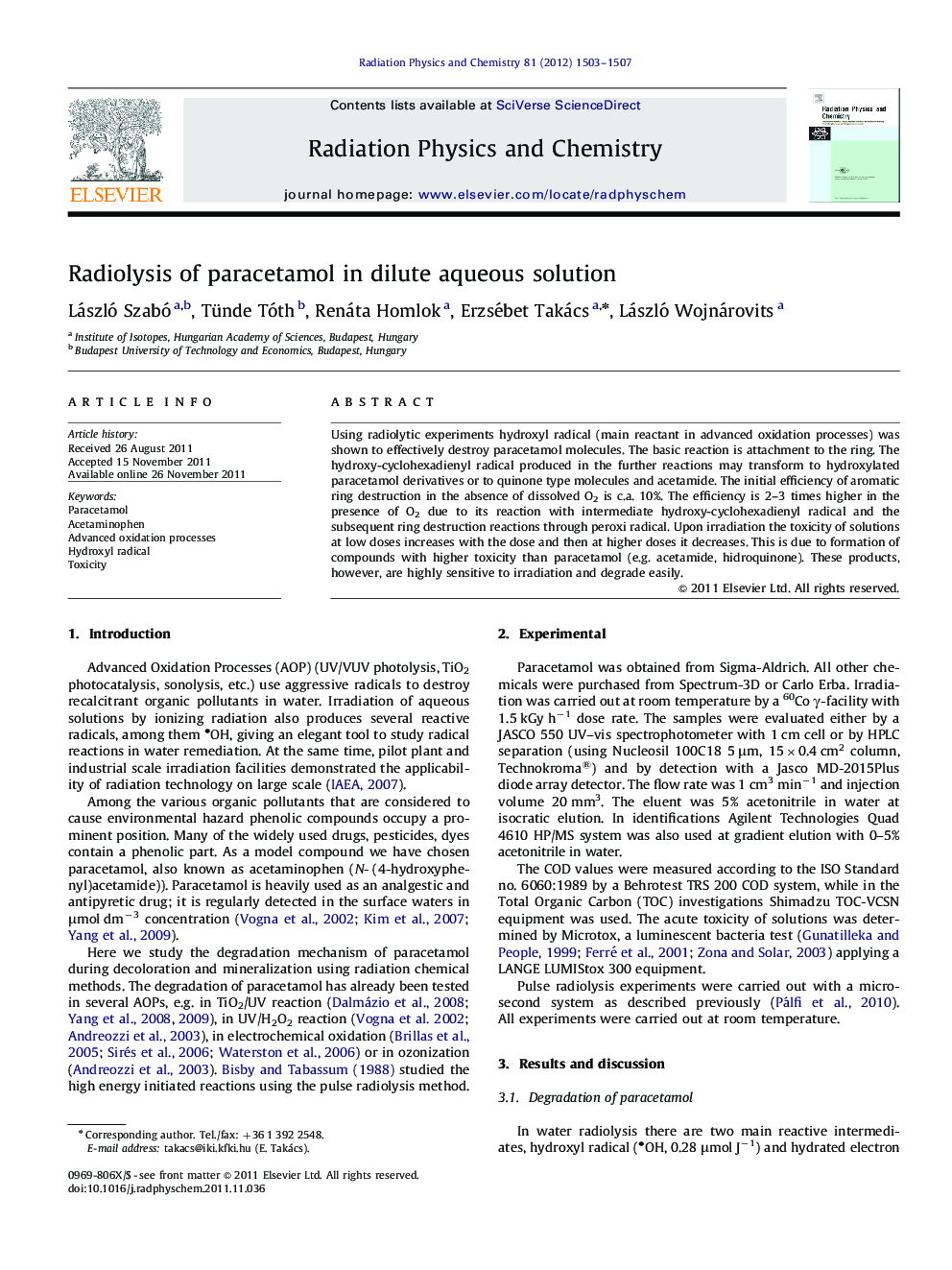| Article ID | Journal | Published Year | Pages | File Type |
|---|---|---|---|---|
| 1886499 | Radiation Physics and Chemistry | 2012 | 5 Pages |
Using radiolytic experiments hydroxyl radical (main reactant in advanced oxidation processes) was shown to effectively destroy paracetamol molecules. The basic reaction is attachment to the ring. The hydroxy-cyclohexadienyl radical produced in the further reactions may transform to hydroxylated paracetamol derivatives or to quinone type molecules and acetamide. The initial efficiency of aromatic ring destruction in the absence of dissolved O2 is c.a. 10%. The efficiency is 2–3 times higher in the presence of O2 due to its reaction with intermediate hydroxy-cyclohexadienyl radical and the subsequent ring destruction reactions through peroxi radical. Upon irradiation the toxicity of solutions at low doses increases with the dose and then at higher doses it decreases. This is due to formation of compounds with higher toxicity than paracetamol (e.g. acetamide, hidroquinone). These products, however, are highly sensitive to irradiation and degrade easily.
► Paracetamol is easily degraded in aqueous solution by low dose irradiation. ► Main degradation products are hydroxylated molecules, acetamide and hydroquinone. ► Toxicity of solutions goes through a maximum as a function of dose.
